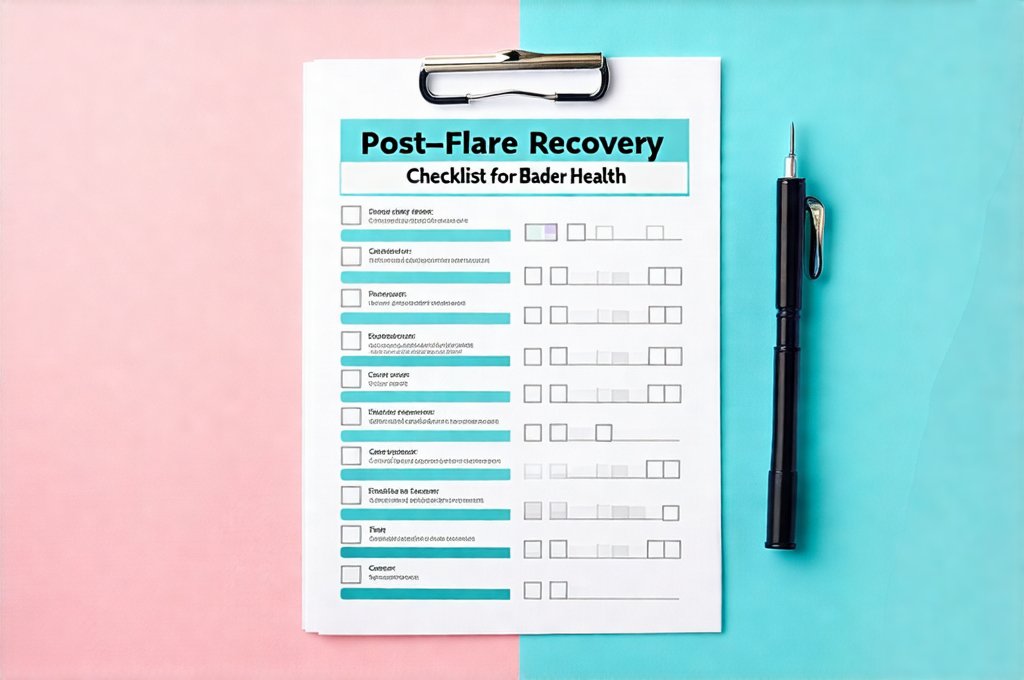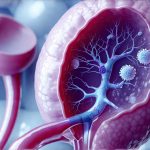Post-flare recovery, often associated with autoimmune conditions like lupus or rheumatoid arthritis, can significantly impact various bodily systems. However, one frequently overlooked consequence is its effect on bladder health. During a flare, increased inflammation and medication side effects can disrupt normal bladder function, leading to urgency, frequency, discomfort, and even incontinence. The period following a flare – the recovery phase – presents a unique set of challenges for restoring bladder control and minimizing long-term issues. It’s crucial to proactively address these concerns not just to alleviate immediate symptoms but also to prevent chronic bladder problems from developing. Understanding how flares affect the bladder, recognizing the signs of post-flare complications, and implementing targeted strategies are essential components of holistic health management during recovery.
The body undergoes a complex process as it transitions out of a flare-up, attempting to return to baseline function. This isn’t always immediate or straightforward; lingering inflammation, ongoing medication adjustments, and fatigue can all contribute to continued bladder issues even after the primary symptoms of the flare have subsided. Many individuals find themselves caught in a cycle of symptom management, focusing on reducing pain and joint swelling while neglecting to address the subtle but persistent changes happening within their urinary system. This often leads to frustration and diminished quality of life, as seemingly minor bladder problems can become significant obstacles to daily activities. Prioritizing bladder health during post-flare recovery is about more than just treating symptoms; it’s about proactively supporting your body’s natural healing processes and minimizing the potential for long-term complications.
Understanding the Flare-Bladder Connection
Autoimmune flares introduce a cascade of physiological changes that directly impact bladder function. Systemic inflammation, a hallmark of these flares, doesn’t discriminate – it affects every organ system, including the urinary tract. This inflammation can irritate the bladder lining, increasing its sensitivity and leading to feelings of urgency even with small amounts of urine. Medications used to manage autoimmune conditions, such as corticosteroids and immunosuppressants, also play a role. Corticosteroids, while effective at reducing inflammation, can have diuretic effects, leading to increased urination and potentially exacerbating bladder symptoms. Immunosuppressants, though necessary for controlling the immune system, can sometimes weaken bladder muscles over time, contributing to urgency or incontinence.
The impact extends beyond direct irritation and medication side effects. Fatigue, a common symptom of both flares and their recovery phase, often leads to reduced physical activity. A sedentary lifestyle can weaken pelvic floor muscles – crucial for supporting bladder control – further increasing the risk of urinary issues. Furthermore, the emotional stress associated with managing a chronic condition like an autoimmune disease can contribute to increased anxiety and tension, which can also exacerbate bladder symptoms. The cycle is complex: flare-induced inflammation leads to medication use, fatigue, and potentially weakened pelvic floor muscles, all culminating in compromised bladder function.
Recognizing this interconnectedness is essential for developing effective recovery strategies. It’s not simply about treating the bladder as an isolated problem; it’s about addressing the underlying factors contributing to its dysfunction within the broader context of post-flare health management. A holistic approach that considers inflammation levels, medication effects, physical activity, and emotional well-being is far more likely to yield positive results. Considering safe natural diuretics can also be helpful in managing fluid balance during this time.
Strategies for Post-Flare Bladder Recovery
Post-flare bladder recovery requires a multifaceted approach centered on restoring normal bladder function and preventing future complications. This begins with hydration management. While it might seem counterintuitive given urinary frequency, restricting fluids can actually concentrate urine, irritating the bladder further. The goal is to drink adequate amounts of water throughout the day – typically 6-8 glasses – while avoiding excessive caffeine, alcohol, and sugary drinks, all of which are known bladder irritants. Spacing fluid intake evenly over several hours instead of consuming large volumes at once can also help minimize urgency.
Beyond hydration, pelvic floor muscle exercises (Kegels) are invaluable. These exercises strengthen the muscles that support the bladder and urethra, improving control and reducing leakage. It’s important to perform Kegels correctly – focusing on squeezing the muscles as if you’re stopping the flow of urine, holding for a few seconds, and then releasing. Consistency is key; aim for several sets throughout the day. A physical therapist specializing in pelvic floor health can provide personalized guidance and ensure proper technique. Finally, mindful bladder habits play an important role. “Bladder training,” where you gradually increase the intervals between urination, can help retrain the bladder to hold more urine. Avoid rushing to the bathroom at the first urge; instead, practice delaying for a few minutes each time. Many postpartum women also benefit from bladder health tips as they recover.
Addressing Specific Bladder Symptoms
Urgency and Frequency
Urinary urgency – that sudden, overwhelming need to urinate – is a common complaint during post-flare recovery. Addressing this requires identifying potential triggers. As mentioned earlier, dietary modifications are crucial; eliminating or reducing caffeine, alcohol, carbonated beverages, and spicy foods can significantly reduce bladder irritation. Beyond diet, stress management techniques like deep breathing exercises, meditation, or yoga can help calm the nervous system and lessen feelings of urgency. If urgency persists, a healthcare professional may recommend medications to relax the bladder muscles or decrease bladder sensitivity.
Frequency – urinating more often than normal – is often linked to fluid intake but can also be exacerbated by inflammation. Maintaining a voiding diary – tracking when you urinate, how much you drink, and any associated symptoms – can help identify patterns and potential triggers. This information can then guide adjustments to your hydration strategy and lifestyle habits. It’s important to differentiate between true frequency (urinating small amounts very often) and nocturia (waking up at night to urinate), which may require different interventions.
Discomfort and Pain
Bladder discomfort or pain during post-flare recovery can range from mild irritation to more severe, chronic pain syndromes. If the pain is persistent or severe, it’s essential to consult a healthcare professional to rule out other underlying causes, such as urinary tract infection (UTI). Interstitial cystitis (IC), also known as painful bladder syndrome, is a chronic condition that can mimic post-flare bladder symptoms and may require specific treatment.
Managing bladder pain often involves a combination of strategies. Warm compresses applied to the lower abdomen or pelvis can provide temporary relief. Gentle stretching exercises can help release tension in the pelvic floor muscles. Some individuals find benefit from alternative therapies like acupuncture or massage. Avoiding tight clothing and opting for breathable fabrics can also minimize irritation. A healthcare professional may recommend medications to reduce inflammation or manage pain.
Incontinence
Incontinence – involuntary urine leakage – is a distressing symptom that can significantly impact quality of life. It’s important to determine the type of incontinence (stress, urge, overflow) to guide treatment. Stress incontinence, caused by weakened pelvic floor muscles, often occurs during activities like coughing, sneezing, or exercise. Urge incontinence results from overactive bladder muscles and is characterized by a sudden, strong urge to urinate followed by leakage. Overflow incontinence happens when the bladder doesn’t empty completely, leading to frequent dribbling.
Treatment for incontinence varies depending on the type. Pelvic floor muscle exercises are often effective for stress incontinence. Bladder training can help manage urge incontinence. In some cases, medications or medical devices may be necessary. It’s crucial to discuss concerns with a healthcare professional to develop an individualized treatment plan. Do not hesitate to seek help – incontinence is treatable, and there are many options available. Maintaining best hygiene practices can also reduce the risk of complications.
The key to successful post-flare bladder recovery lies in proactive management, personalized strategies, and open communication with your healthcare team. Remember that recovery isn’t linear; there will be ups and downs. Be patient with yourself, celebrate small victories, and prioritize self-care throughout the process. Understanding how to monitor bladder health at home can also empower you to take control of your well-being.





















